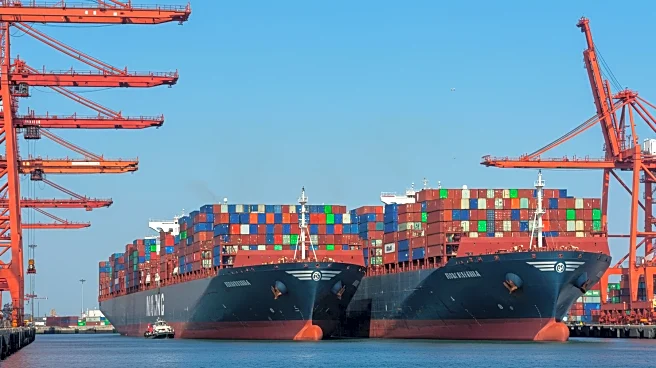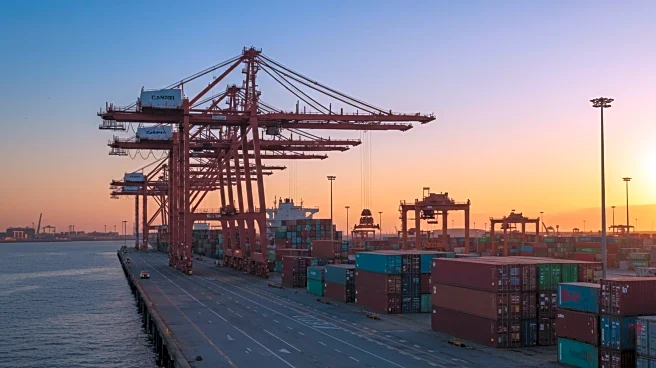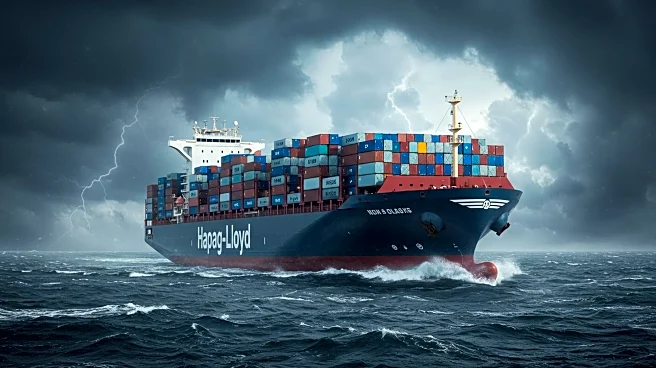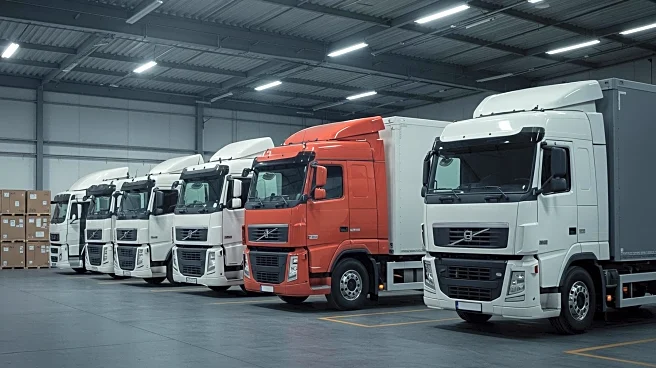What's Happening?
The Ports of Los Angeles and Long Beach have reported record cargo volumes for July, driven by importers pulling forward goods in anticipation of potential tariff hikes. The Port of Los Angeles recorded its highest monthly volume in 117 years, with a total of 1,019,837 Twenty-Foot Equivalent Units (TEU), marking an 8.5% annual increase. Similarly, the Port of Long Beach set a new July record with a total volume of 944,232 TEU, a 7% annual rise. The surge in imports is attributed to retailers capitalizing on lower costs during a temporary pause on tariffs, while exports and empty container movements also saw significant increases.
Why It's Important?
The record-setting cargo volumes at these major ports reflect the impact of shifting trade policies and the strategic decisions made by importers and exporters. The increase in imports suggests a proactive approach by businesses to mitigate potential tariff impacts, which could influence inventory levels and supply chain dynamics in the coming months. The ports' ability to handle such high volumes efficiently is crucial for maintaining the flow of goods and supporting U.S. businesses. However, the uncertainty surrounding trade policies may lead to fluctuations in cargo volumes, affecting logistics and supply chain planning.
What's Next?
Looking ahead, the Port of Los Angeles anticipates a potential peak in cargo volumes, with August estimates slightly lower than July's record. The ongoing trade policy shifts may result in a decrease in cargo volumes in the latter half of 2025, as forecasted by the Port of Long Beach. Stakeholders in the logistics and supply chain sectors will need to monitor these developments closely, adjusting strategies to navigate the evolving trade landscape and its impact on import and export activities.











